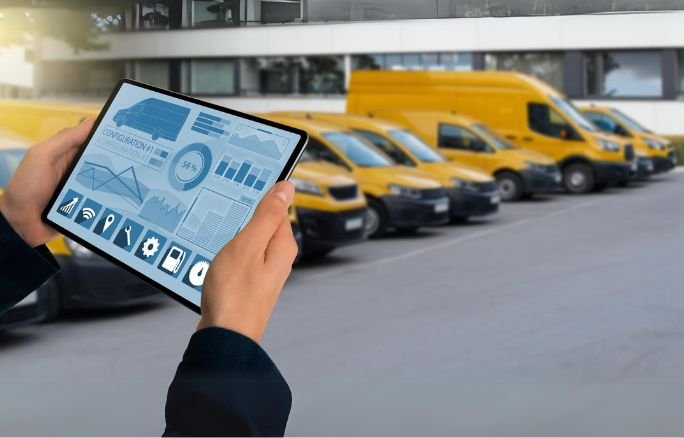Key Takeaways
- Understanding the essentials of fleet electrification and its impact on emission reduction.
- Exploring the latest developments in charging infrastructure to support electric vehicle fleets.
- Insights into cost considerations and strategies for implementing charging stations.
Table of Contents
- Introduction to Fleet Electrification
- Benefits of Transitioning to Electric Fleets
- Essential Infrastructure for Electric Fleets
- Challenges of Implementing Charging Solutions
- Analyzing Costs and ROI of Electric Fleets
- Case Studies and Real-World Examples
- Future Trends in Fleet Electrification
- Conclusion: Making the Move to Electric
Introduction to Fleet Electrification
As the planet begins its path toward sustainable growth, electric fleet deployment emerges as a crucial initiative in decreasing the worldwide carbon footprint. Businesses and governments recognize the immense value of switching from traditional fuel-powered vehicles to electric ones. This transition underpins their commitment to environmental sustainability and opens avenues for cost savings and improved operational efficiency. One of the essential components of this transformation involves establishing a comprehensive EV fleet charging infrastructure. It consists of integrating charging stations that cater to the dynamic needs of a modern electric fleet. The goal is to provide reliability and accessibility while minimizing downtime and maximizing vehicle performance. For businesses, this means investing in technologies and partnerships that ensure their fleets remain on the move.
Benefits of Transitioning to Electric Fleets
The motivation behind moving to electric fleets extends beyond environmental considerations. Electric vehicles (EVs) present numerous operational benefits, paving the way for businesses to rethink fleet strategy. To begin with, electric cars (EVs) decrease fuel usage considerably, as they depend on electricity, which tends to be less expensive and more stable than traditional fuel. It makes forecasting and managing fleet budgets more predictable.
Moreover, electric vehicles are designed with fewer mechanical components than their combustion counterparts, resulting in lower maintenance requirements. This difference translates into reduced downtime and longer vehicle life, driving efficiency and profitability. The quiet operation of EVs adds a layer of comfort and reduces noise pollution in urban settings, enhancing employees’ driving experience.
Essential Infrastructure for Electric Fleets
The cornerstone of successful fleet electrification lies in robust charging infrastructure. Developing this network requires strategic planning to offer convenience and reliability for drivers. Fast chargers, capable of delivering significant energy in short periods, are vital for businesses requiring rapid vehicle turnaround. Conversely, standard chargers are suited for overnight or extended parking, where charging speed is not critical. The placement of these chargers needs to be aligned with natural vehicle routes and operations. This alignment ensures minimal disruption and maximum convenience. Infrastructure planning must also consider future scalability, adapting to advancements in vehicle technology and the anticipated growth of the electric fleet. These elements are the bedrock for an effective charging strategy, facilitating a seamless transition to electric operations.
Challenges of Implementing Charging Solutions
Despite the clear benefits, transitioning to an electric fleet is challenging. One significant issue is the strain on local power grids, which the concentrated deployment of charging stations can exacerbate. Engaging with power utilities to enhance grid infrastructure and implement energy management systems is crucial to overcoming this hurdle.
Additionally, installing and maintaining charging infrastructure can be a financial burden, necessitating a carefully constructed business case. Grants, incentives, and partnerships can offset these costs, but meticulous financial planning remains essential. Companies must anticipate these challenges and incorporate strategic actions to ensure economic and operational viability.
Analyzing Costs and ROI of Electric Fleets
The initial capital required for purchasing electric vehicles and setting up associated infrastructure can be significant. Nevertheless, the long-term cost benefits are compelling. Electric cars often cost less to operate over their lifespan due to savings in fuel and maintenance. Understanding the total cost of ownership is critical for businesses. This analysis includes evaluating savings from reduced fuel consumption and lower maintenance costs against the upfront investment. Many companies find that the investment pays for itself over time, providing substantial returns and contributing to their sustainability goals. By making these calculations, businesses can make informed decisions about fleet electrification.
Case Studies and Real-World Examples
Examining real-world case studies provides valuable insights into the practical aspects of fleet electrification. For example, delivery services and urban logistics companies have reported significant reductions in operational costs since integrating EVs into their fleets. These companies have effectively managed the hurdles of starting and running their operations, creating a benchmark for others in the sector. These case studies showcase varied approaches to fleet electrification, from gradual integrations to full-scale conversions, capturing lessons from which other entities can learn. Real-world evidence demonstrates that, with strategic planning and execution, fleet electrification can deliver significant operational benefits.
Future Trends in Fleet Electrification
The future holds promising developments for fleet electrification. Battery technology continues to evolve, enhancing energy density and reducing costs. This breakthrough promises longer ranges and fewer charging sessions, amplifying the appeal of electric fleets. Furthermore, emerging trends such as autonomous driving and V2G (vehicle-to-grid) capabilities could revolutionize fleet management. Companies are preparing for these advancements by adapting infrastructures and processes to take advantage of upcoming technological shifts. The electrification journey is dynamic, with innovation at its core, making it an exciting space for businesses committed to sustainable operations.
Conclusion: Making the Move to Electric
In conclusion, fleet electrification is more than just a trend; it’s a formidable step towards a sustainable future. With the strategic deployment of charging infrastructures and a clear understanding of cost-benefit dynamics, businesses can implement electric fleets effectively. The combination of environmental, financial, and operational benefits makes this transition attractive for many companies. Ultimately, migrating to an electric fleet is about commitment and foresight. Forward-thinking leaders must embrace change and invest in a more sustainable business model. With the proper planning and supportive infrastructure, fleet electrification can lead businesses into a new era of efficiency and sustainability.




